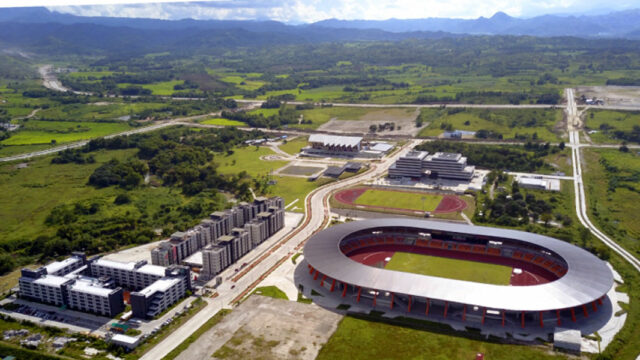Earlier this year, the World Health Organization declared an end to the global public health emergency at the outbreak of coronavirus disease 2019 (COVID-19). Even so, we still have to deal with COVID-19 and all the disruption it inflicted at the height of the pandemic.
Similarly, from a tax perspective, the extension of the filing deadlines and the suspension of the running of the statute of limitations implemented at the height of the pandemic have had ripple effects which may still be felt today. There are still lingering questions such as “Was the running of the three-year prescriptive period to assess internal revenue taxes during the COVID lockdowns validly suspended by the Commissioner of Internal Revenue (CIR)?” And, “Was the CIR actually prohibited during the lockdown from assessing deficiency taxes?” The answers are still up for debate and there is no jurisprudence to settle these questions as yet.
For the sake of argument, however, let us assume that the CIR validly suspended the running of the statute of limitations via Revenue Memorandum Circular (RMC) No. 34-2020. The next question to be asked is, “For how many days has the running of the statute of limitations been suspended, thereby extending the Bureau of Internal Revenue’s (BIR) period to assess deficiency taxes?”.
Citing Section 4(z) of Republic Act No. 11469 otherwise known as the Bayanihan to Heal as One Act, Revenue Regulations (RR) No. 7-2020 suspended the running of the statute of limitations pursuant to Section 223 of the National Internal Revenue Code of 1997, as amended (Tax Code). The suspension commenced from March 16, 2020 and extended the statute of limitations by 60 days after the lifting of the state of emergency. RR No. 7-2020 was later amended by RR Nos. 10-2020, 11-2020, and 12-2020, which kept the policy that the extended due dates (e.g., 60 days after the lifting of the quarantine in the case of the suspension of the running of the statute of limitations) are to remain in effect, regardless of any extension or modification of quarantine.
Following these RRs, the BIR issued several RMCs (i.e., RMC Nos. 136-2020, 52-2021, 80-2021, and 93-2021) to clarify the number of days’ extension afforded by the suspensions. These issuances are also the same ones cited by the BIR in the recent Preliminary Assessment Notices and Final Assessment Notices/Formal Letters of Demand (collectively, Assessment Notices) it issues to assess taxpayers.
The recent set of Assessment Notices contains the following paragraph on the period of prescription:
“The running of the statute of limitations upon assessment was suspended in light of the declaration of an Enhanced Community Quarantine (ECQ) and Modified Enhanced Community Quarantine (MECQ) pursuant to Revenue Memorandum Circular (RMC) Nos. 136-2020, 52-2021/80-2021 and 93-2021 for 212 days, 107 days 101 days, respectively, as clarified by Operations Memorandum No. 66-2022. Therefore, the period of prescription is extended from the original prescriptive date up to (date of 420th day).”
Upon scrutiny, however, there seems to be a discrepancy between the total number of days expressly extended under the RMCs (i.e., 345 days) and the total number of days reflected in the Assessment Notices (i.e., 420 days). For better appreciation, below is a side-by-side comparison of number of days per RMCs and per Assessment Notices.
As noted from the table below, there is a difference of 75 days between what is actually stated in RMC No. 136-2020 and what the Assessment Notices have been reflecting. Looking back on the period covered by RMC No. 136-2020, the 137 days may have just considered the period from March 16, 2020 until May 31, 2020 when the majority of the heavily populated areas in Luzon were placed under either ECQ or MECQ, depending on the location.

There was, however, another declaration placing the National Capital Region and the provinces of Bulacan, Laguna, Cavite, and Rizal back on MECQ between Aug. 4, 2020 and Aug. 18, 2020, which is 15 days. Counting these 15 days plus the 60-day extension under RR No. 11-2020, as amended, such may have been the basis used to account for the additional 75 days being used in the Assessment Notices for RMC No. 136-2020.
While it may be argued that RR No. 7-2020 and its amendments justify the counting of 212 days used by the Assessment Notices, taxpayers may also argue that the BIR is estopped from considering the period from Aug. 4-18, 2020 since RMC No. 136-2020 (dated Dec. 7, 2020) clearly states that the total number of days excluded from the running of the statute of limitations is 137 days.
As of this writing, there is no separate BIR issuance published that covers the period from Aug. 4, 2020 to Aug. 18, 2020 since the subsequent RMCs (i.e., RMC Nos. 52-2021, 80-2021, and 93-2021) already take into consideration the ECQ and MECQ declarations in 2021. Considering the principle highlighted in the case of Tanada v. Tuvera (G.R. No. L-63915) on the obligation of the government to publicize all presidential issuances “of a public nature” or “of general applicability” as a requirement of due process, there should have been an RMC that clarified the basis for the 212 days currently indicated in the Assessment Notices.
Thus, in my view, assuming the statute of limitations was validly extended, the total adjustment to the prescriptive period of assessments should only be 345 days instead of the 420 days as proposed in the BIR’s Assessment Notices. As I mentioned earlier, however, whether any actual extension at all is valid is another matter altogether — one that I hope will reach the high court in due time.
The views or opinions expressed in this article are solely those of the author and do not necessarily represent those of Isla Lipana & Co. The content is for general information purposes only, and should not be used as a substitute for specific advice.
Paolo John Dantes is a manager at the Tax Services department of Isla Lipana & Co., the Philippine member firm of the PwC network.
+63 (2)8845-2728
paolo.john.dantes@pwc.com













